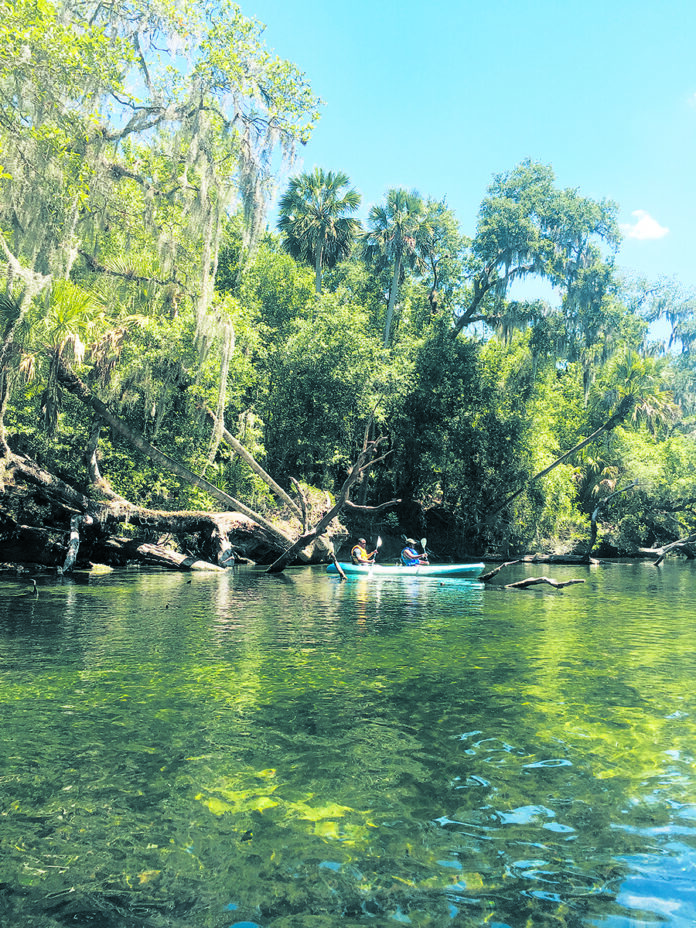
Florida’s population is growing at 1,000 people per day. That’s 1,000 people who will need housing, food and water.
One thousand people more per day will be bathing, doing laundry, cooking and, in many cases, irrigating lawns.
In some counties, the water supply is a river or lake. In West Volusia, we depend on the Floridan aquifer. We get 100 percent of our potable water from the aquifer.
Luckily, we are no longer using exclusively that clean water from the aquifer to water our lawns. Many areas now use reclaimed water from wastewater-treatment facilities and stormwater collected in ponds for landscape irrigation. (Most landscapes require less irrigation than people think, or none.)
On this blue planet, a massive amount of water continuously cycles among the atmosphere, oceans, ice, underground water and surface water. Fresh water makes up only 2.5 percent of the water on the globe.
If water is constantly recycling naturally, why, then, do we run short on clean fresh water for domestic, industrial and agricultural uses? And how do we ensure that the cycle maintains enough volume to support species like manatees as well as humans?
In West Volusia, the rate at which we draw water from the aquifer outpaces the rate at which the aquifer is replenished or recharged by rainwater or wastewater. Water evaporates through spray irrigation or storage in surface-water ponds, rather than soaking into the ground through channels forged by the deep roots of native vegetation.
How then do we keep our water supply in balance? The St. Johns River Water Management District’s Blue Spring Basin Action Management Plan sets guidelines for West Volusia to achieve that balance in the Blue Spring “springshed” — the area from north DeLand to Lake Helen to Orange City that recharges groundwater that ultimately flows out of Blue Spring.
“Low Impact Development” (LID) and “Green Infrastructure” (GI) design principles are an effective toolbox to draw from. These tools include protecting as much natural area as possible, and leaving mature trees, understory and wetlands to do the job of infiltrating water into the ground.
Designing sites with compact building areas (small lots, or building more stories instead of more footprint), and preserving large swaths of natural areas to serve as shared amenities, are key. In the built areas, we can use pervious surfaces, like pavers in parking areas.
Another tool is the use of rain gardens and bioswales. These can be in the drainage swales between homes, in rights of way between sidewalks and streets, or along the backs of backyards.
They can also replace raised planted islands in parking lots, entranceways and divided boulevards.
Rain gardens and bioswales are planted with a diversity of deep-rooted native plants that are adapted to variable soil-moisture conditions. Because they sit at or below the grade of the surrounding area, rainwater flows into them, then percolates and filters through the permeable stone and soil, even as some of that water is taken up by the plants.
LID and GI toolkits include a variety of solutions that optimize water use or infiltration on the site, instead of spending a lot of money designing drains, pipes and ponds to carry water off-site.
We can work with nature, instead of against it, and let nature do the work for us to keep our water supply continually recharged for both the ever-growing human population and all the other species that still depend on it.
These “ecosystem services” are what nature provides — for free — that we would otherwise have to spend large sums of money to replicate.
These toolkits need to be included in our cities’ and our county’s minimum standards for development, to slow down the risk of running out of water in West Volusia.
We can’t grow at this pace indefinitely, but we can certainly design our sites in a way that maintains much of our natural hydrology.
— Anderson is a professor of environmental science and studies at Stetson University, and chair of the Volusia Soil and Water Conservation District Board of Supervisors.